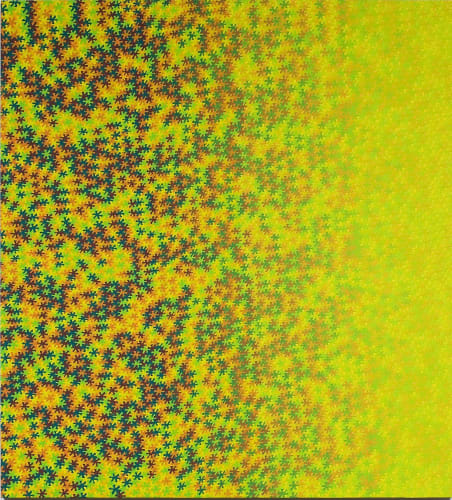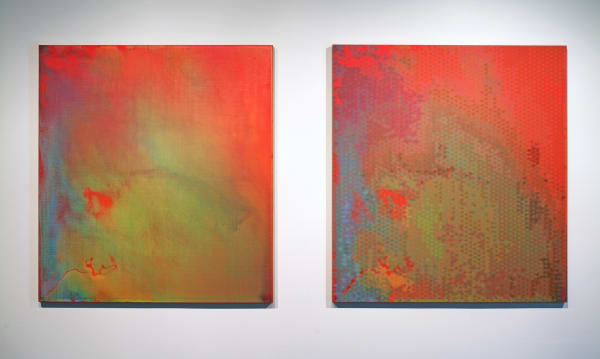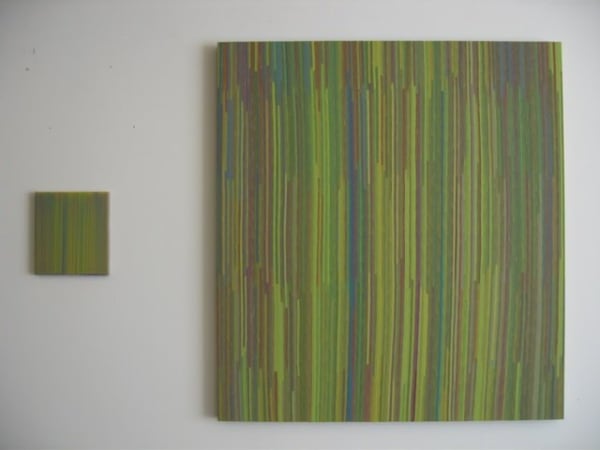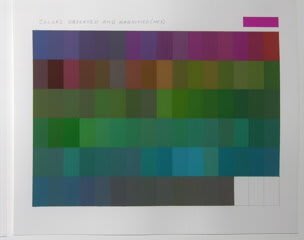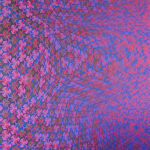Anoka Faruqee : As Far As the Eye Can See
Anoka Faruqee’s paintings are intensely colored and laboriously produced. Her process exploits the relationship between the spontaneous, authentic occurrence and the methodical construction.
One segment of her work involves diptychs, in which one painting is made through a process involving chance and spontaneity, and the second painting represents an attempt to simulate the first through a labor-intensive, repetitive process. The abstract pours or gestural strokes of the initial painting refer to Expressionist materiality, and ultimately to the space prior to consciousness: the space of nature and authenticity. However, the handmade, pixilated patterns of the second, “copy” painting ultimately exist in a frustrated relationship to expression and also allude to a numerical language common to computer technology as well as to weaving and Islamic tiling. By layering two optical systems (the expressionist and laborious) these works combine the painterly with the conceptual.
Another aspect of Faruqee’s work are “fade” paintings, whose patterned surfaces of various colors seem to disappear or fade away. Again the illusion is one of spontaneity; one may imagine that a translucent airbrush, a spill, or even light itself has interrupted the image. But the shift in hue actually occurs slowly and deliberately, one handmade gesture at a time.
-
 Anoka FaruqeePour Painting (with incised grid) and Copy (in 93 colors), 2005acrylic on linen on panel45 x 41 inches/114.3 x 104.1 cm
Anoka FaruqeePour Painting (with incised grid) and Copy (in 93 colors), 2005acrylic on linen on panel45 x 41 inches/114.3 x 104.1 cm -

-

-
 Anoka FaruqeeFreehand Fade to Magenta Ground, 2007flashe vinyl on linen on panel56.66 x 46.18 inches
Anoka FaruqeeFreehand Fade to Magenta Ground, 2007flashe vinyl on linen on panel56.66 x 46.18 inches
143.8 x 117.2 cms -

-

-

-
 Anoka FaruqeeFade to Blue Painting, 2006flashe on linen on panel50.625 x 46.125 inches
Anoka FaruqeeFade to Blue Painting, 2006flashe on linen on panel50.625 x 46.125 inches
128.6 x 117.2 cms -

-

-

-

